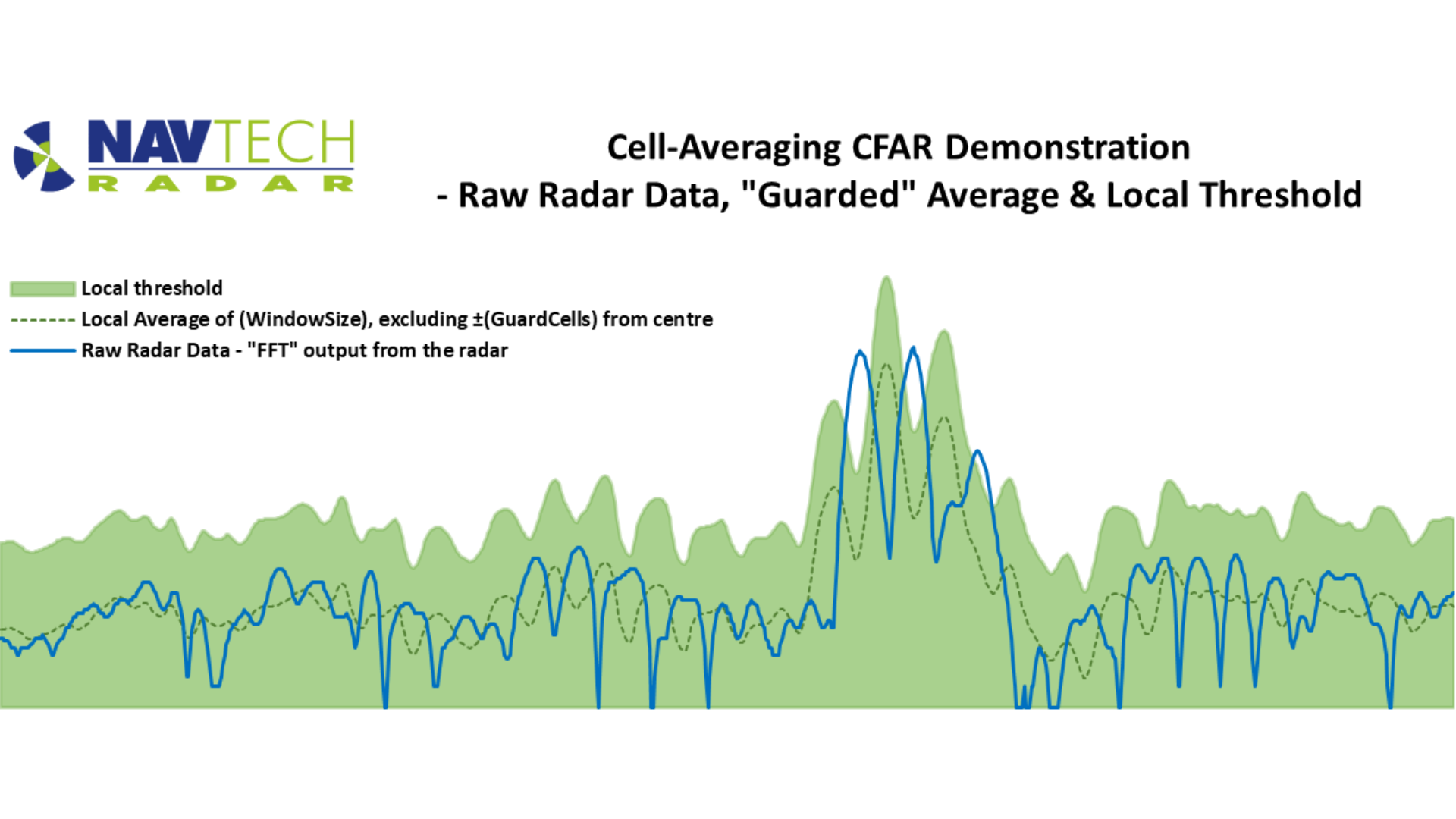Published: 22/07/2024

Radar systems have long been the backbone of modern technology with unrivalled all weather and all-condition performance. This means that radar is often the only viable sensing technology in mission-critical applications from marine and aviation, to defence and mining. The CA-CFAR algorithm takes this capability to new heights by dynamically adapting to the surrounding environment.
In a nutshell, the CA-CFAR algorithm processes a single azimuth of radar data using a sliding window approach. The central datapoint within the window is evaluated against the mean value of the surrounding data. If the central datapoint exceeds the local mean by a defined threshold, it is considered a valid object within the radar’s field of view.
To enhance sensitivity, (n) datapoints on either side of the central point are excluded when calculating the local mean. This approach has been implemented in Navtech’s radar firmware versions 3.1.0.325.
Our latest development includes the introduction of the CFAR “Point Cloud” output format, providing a comprehensive view of the radar’s environment. This output is generated through UDP streaming, offering a real-time representation of significant features within the radar’s field of view.
To facilitate seamless integration, we have incorporated the CFAR “Point Cloud” output into our Software Development Kit (SDK). This ensures that developers can easily harness the power of CFAR detection in their applications, bringing enhanced target identification capabilities.
Furthermore, our Python client now supports the CFAR algorithm, allowing for straightforward implementation and customisation.
We understand the importance of demystifying the technicalities surrounding CFAR calculations. To assist our community, we have created a user-friendly CA-CFAR calculation sheet. This sheet provides a step-by-step guide, accompanied by visual representations, making it accessible to both seasoned professionals and those new to radar technology.
If you are eager to learn more about our CFAR technology, the CFAR "Point Cloud" output, or how our SDK and Python client can revolutionise your radar applications, we invite you to get in touch with us. Our team is ready to provide insights, answer your queries, and explore collaborative possibilities in pushing the boundaries of radar technology.
Get in touch